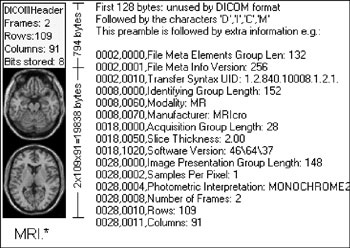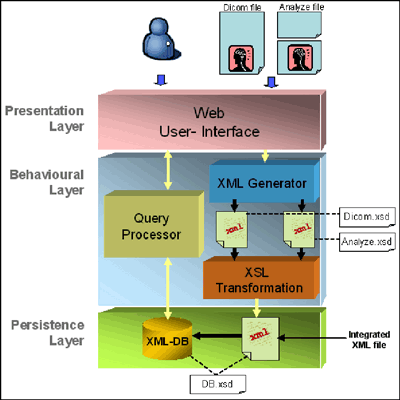|
|||||
Managing Medical Imagesby César J. Acuña, Esperanza Marcos, Valeria de Castro and J. A. Hernández Due to the increasing number of digital images used in medical diagnosis, health centres need new and better applications with which to effectively manage such information. It is also necessary to develop an infrastructure for integrating and sharing that information between medical image repositories. Researchers from the Rey Juan Carlos University of Madrid are working on this problem. Recently, the use of digital images for medical diagnosis has increased considerably. New and better applications are therefore needed in order to effectively manage large amounts of medical information. DICOM is currently the standard for Digital Imaging and COmmunications in Medicine. However, despite DICOM being the most widely accepted standard, it can only handle interchange and communications among medical imaging equipment and other specific software tools called PACS (Picture Archive and Communications Systems). PACS tools are developed for several providers that use proprietary formats to store and manage medical information. Drawbacks such as these make the integration and use of DICOM difficult in a wider context such as the Web. In addition, another image storage format, known as Analyze, is widely used. This is a proprietary format part of the Analyze Software. As a further complication, the standard for information exchange and data transportation between multiple applications is XML. For these reasons, the Database and Web Engineering Kybele Research Group and the Electronic Technology, Bioengineering and Medical Image Research Group at the Rey Juan Carlos University, together with some private and public medical centres in Madrid (Spain) are currently working on two main research topics. These are aimed at making digital image information more easily exchangeable in a wide context.
The first of these is the design and development of a Web Information System (WIS) with two main aims. The first of these is that DICOM files will be represented using XML, which will improve the interoperability and integration of medical information in a broader context like the Web. On the other hand, it will facilitate the integrated organisation, query and retrieval of DICOM and Analyze files by means of an XML database. The WIS is currently under development. Taking as a reference point the architectures for Web applications development proposed by .NET and J2EE, the WIS architecture was structured in three layers as shown in Figure 2. These are as follows:
Our Web Integration Architecture is also in development, and is based on ontologies and Web services in order to develop a Web portal for integrated access to medical image repositories. Please contact: |
|||||




